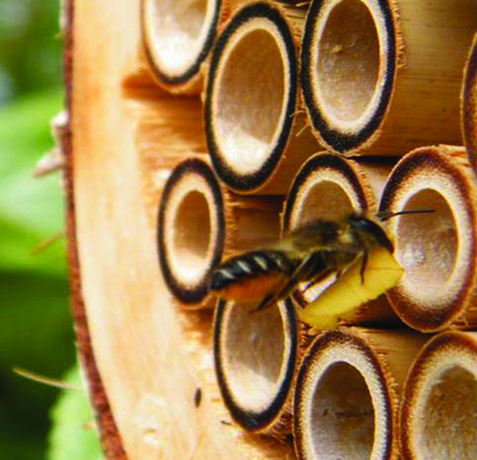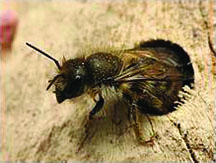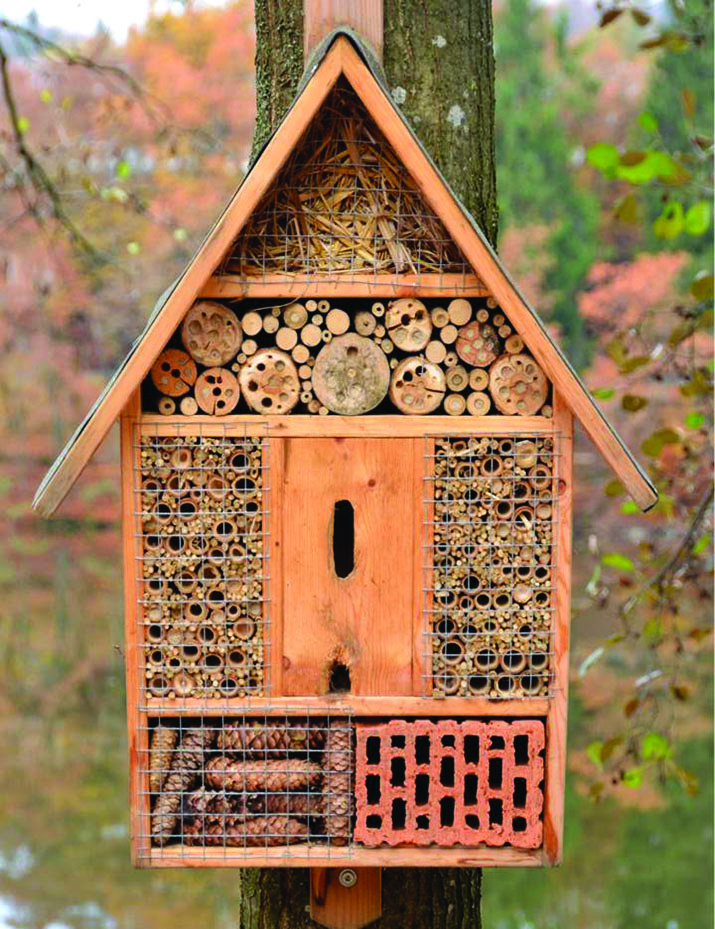
Smart gardening for kids: How to make your yard bee-friendly
DOWNLOADJanuary 1, 2019 - Diane Brown
Smart gardeners know that good insects, like lady beetles, lacewings and pollinators, do their fair share of work in the garden. Pollinators are a variety of mostly bees and butterflies that pollinate more than 85 percent of the world’s flowering plants.
We often think first of the honey bee as a pollinator, but there are over 400 kinds of native bees living in Michigan. Without pollinators, the seeds, fruits and some vegetables that people, song birds and even black bears eat wouldn’t exist.
Pollinators will want to live in your yard and garden if you make a few changes that are bee-friendly, creating a healthy place for them to live. Although some people find the idea of inviting and encouraging bees in a garden scary, remember most bees are gentle creatures. Drawn by the food and habitat you have made available to them, they will mostly mind their own business and are not interested in bothering you.

Make your yard a good place to nest
There are many ways to make your yard or garden more bee-friendly. Native bees, also called wild bees, nest in lots of places, depending on what kind of bees they are. Some nest above ground in places like the hollow stems of plants, however, most—about 70%—nest in the ground.

Sweat bees, mining bees and bumble bees are ground-nesting native bees that nest in untouched areas of soil or sand. Or they may live in a hole left by a mouse or other rodent. The type of soil they like depends on the type of bee, but if you leave a few bare patches of soil in an out-of-the way place like behind a garden shed or along a lightly used path, bees will find it and make themselves a home. The best places for these patches are where soil doesn’t get packed down by being walked on. If you encourage pollinators to make their nests in out-of-the-way places, they are less likely to come into contact with people.

Cavity-nesting bees, such as mason bees, can live in natural structures or those built by humans. In nature, these bees lay their eggs in old beetle burrows, twig bundles or ornamental grass stems. In yards and gardens that are very neatly raked and trimmed, there may not be many cavities like hollow stems where bees that nest can lay their eggs.
You can help make more nesting locations by buying or building bee hotels. These structures contain openings of a variety of sizes where bees can nest. The holes or tubes in your bee hotel need to have a solid back (dead end) so it is protected on one end. It is also important your bee hotels are made from wood that has not been treated with preservatives.

Place or design your bee hotel so that it is protected from rain and snow, birds and too much sunlight. Add a small, sloping roof or put them under a garden shed or garage roof to keep the rain off. If you want to keep mason or leaf cutter bees, learn what they need with this online publication from MSU Extension: bit.ly/build4bees. If you just want to make nesting spaces for many types of bees, drilled wood, bamboo reeds, twigs and pinecones will appeal to a variety of them. Bees will also use a pile of old twigs and bricks.
Give bees good nectar to eat
Pollinators drink nectar from flowering plants for food. If you want to keep your bees and butterflies well fed, plant lots of flowers. Try to have different plants blooming from spring to fall. Native bees come in many shapes and sizes, and often have bodies that make it easiest for them to drink nectar from native trees, shrubs and flowers. However, you can mix native and non-native plants to keep your bees well fed. For some ideas about what to plant, see this MSU Extension publication: bit.ly/plants4pollinators.
By planting flowering plants for nectar and providing space for bees to nest, you can “bee” a good host for pollinators in your garden!




 Print
Print Email
Email